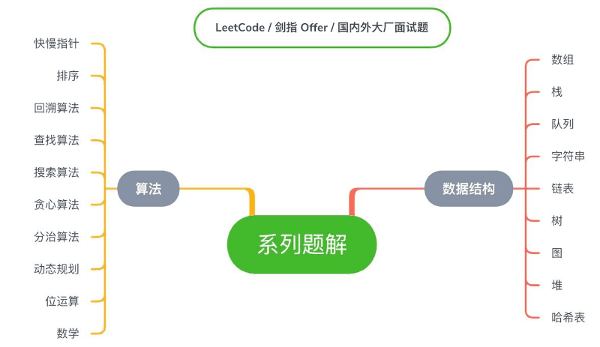揭秘 Kotlin 1.6.20 重磅功能 Context Receivers
- 如果评论区没有及时回复,欢迎来公众号:ByteCode 咨询
- 公众号:ByteCode。致力于分享最新技术原创文章,涉及 Kotlin、Jetpack、算法、译文、系统源码相关的文章
这篇文章我们一起来聊一下 Kotlin 1.6.20 的新功能 Context Receivers,来看看它为我们解决了什么问题。
通过这篇文章将会学习到以下内容:
- 扩展函数的局限性
- 什么是
Context Receivers,以及如何使用 Context Receivers解决了什么问题- 引入
Context Receivers会带来新的问题,我们如何解决 Context Receivers应用范围及注意事项
扩展函数的局限性
在 Kotlin 中接受者只能应用在扩展函数或者带接受者 lambda 表达式中, 如下所示。
class Context { |
接受者是 fun 关键字之后和点之前的类型 Context,这里隐藏了两个知识点。
- 我们可以像调用内部函数一样,调用扩展函数
px2dp(),通常结合 Kotlin 作用域函数with,run,apply等等一起使用。
with(Context()) { |
- 在扩展函数内部,我们可以使用
this关键字,或者隐藏关键字隐式访问内部的成员函数,但是我们不能访问私有成员
扩展函数使用起来很方便,我们可以对系统或者第三方库进行扩展,但是也有局限性。
- 只能定义一个接受者,因此限制了它的可组合性,如果有多个接受者只能当做参数传递。比如我们调用
px2dp()方法的同时,往logcat和file中写入日志。
class LogContext { |
- 在 Kotlin 中接受者只能应用在扩展函数或者带接受者
lambda表达式中,却不能在普通函数中使用,失去了灵活性
Context Receivers 的出现带来新的可能性,它通过了组合的方式,将多个上下文接受者合并在一起,灵活性更高,应用范围更广。
什么是 Context Receivers
Context Receivers 用于表示一个基本约束,即在某些情况下需要在某些范围内才能完成的事情,它更加的灵活,可以通过组合的方式,组织上下文,将系统或者第三方类组合在一起,实现更多的功能。
如果想在项目中使用 Context Receivers,需要将 Kotlin 插件升级到 1.6.20 ,并且在项目中开启才可以使用。
plugins { |
如何使用 Context Receivers
当我们完成上述配置之后,就可以在项目中使用 Context Receivers,现在我们将上面的案例改造一下。
context(LogContext, FileContext) |
我们在 printf() 函数上,使用 context() 关键字,在 context() 关键字括号中,声明上下文接收者类型的列表,多个类型用逗号分隔。但是列出的类型不允许重复,它们之间不允许有子类型关系。
通过 context() 关键字来限制它的作用范围,在这个函数中,我们可以调用上下文 LogContext 、 FileContext 内部的方法,但是使用的时候,只能通过 Kotlin 作用域函数嵌套来传递多个接受者,也许在未来可能会提供更加优雅的方式。
with(LogContext()) { |
引入 Context Receivers 导致可读性问题
如果我们在 LogContext 和 FileContext 中声明了多个相同名字的变量或者函数,我们只能通过 this@Lable 语句来解决这个问题。
context(LogContext, FileContext) |
正如你所见,在 LogContext 和 FileContext 中都有一个名为 name 的变量,我们只能通过 this@Lable 语句来访问,但是这样会引入一个新的问题,如果有大量的同名的变量或者函数,会导致 this 关键字分散到处都是,造成可读性很差。所以我们可以通过接口隔离的方式,来解决这个问题。
interface LogContextInterface{ |
通过接口隔离的方式,我们就可以解决 this 关键字导致的可读性差的问题,使用的时候需要实例化接口。
val logContext = object : LogContextInterface { |
Context Receivers 应用范围及注意事项
当我们重写带有上下文接受者的函数时,必须声明为相同类型的上下文接受者。
interface Canvas |
我们重写了 draw() 函数,声明的上下文接受者必须是相同的,Context Receivers 不仅可以作用在扩展函数、普通函数上,而且还可以作用在类上。
context(LogContextInterface, FileContextInterface) |
在类 LogHelp 上使用了 context() 关键字,我们就可以在 LogHelp 范围内任意的地方使用 LogContext 或者 FileContex。
val logHelp = with(logContext) { |
Context Receivers 除了作用在扩展函数、普通函数、类上,还可以作用在属性 getter 和 setter 以及 lambda 表达式上。
context(View) |
最后我们来看一下,来自社区 Context Receivers 实践的案例,扩展 Json 工具类。
fun json(build: JSONObject.() -> Unit) = JSONObject().apply { build() } |
总结
Context Receivers提供一个基本的约束,可以在指定范围内,通过组合的方式实现更多的功能Context Receivers可以作用在扩展函数、普通函数、类、属性getter和setter、lambda表达式Context Receivers允许在不需要继承的情况,通过组合的方式,组织上下文,将系统或者第三方类组合在一起,实现更多的功能- 通过
context()关键字声明,在context()关键字括号中,声明上下文接收者类型的列表,多个类型用逗号分隔 - 如果大量使用
this关键字会导致可读性变差,我们可以通过接口隔离的方式来解决这个问题 - 当我们重写带有上下文接受者的函数时,必须声明为相同类型的上下文接受者
全文到这里就结束了,感谢你的阅读,如果有帮助,欢迎 在看 、 点赞 、 收藏 、 分享 给身边的朋友。
真诚推荐你关注我,公众号:ByteCode ,持续分享硬核原创内容,Kotlin、Jetpack、性能优化、系统源码、算法及数据结构、动画、大厂面经。
近期必读热门文章
最后推荐长期更新和维护的项目:
个人博客,将所有文章进行分类,欢迎前去查看 https://hi-dhl.com
KtKit 小巧而实用,用 Kotlin 语言编写的工具库,欢迎前去查看 KtKit
计划建立一个最全、最新的 AndroidX Jetpack 相关组件的实战项目以及相关组件原理分析文章,正在逐渐增加 Jetpack 新成员,仓库持续更新,欢迎前去查看 AndroidX-Jetpack-Practice
LeetCode / 剑指 offer / 国内外大厂面试题 / 多线程题解,语言 Java 和 kotlin,包含多种解法、解题思路、时间复杂度、空间复杂度分析

- 本文作者:hi-dhl
- 本文标题:揭秘 Kotlin 1.6.20 重磅功能 Context Receivers
- 本文链接:https://hi-dhl.com/2022/05/12/kotlin/20-Context-Receivers/
- 版权声明:本博客所有文章除特别声明外,均采用 CC BY-NC-SA 4.0 许可协议。转载请注明来自 hi-dhl

